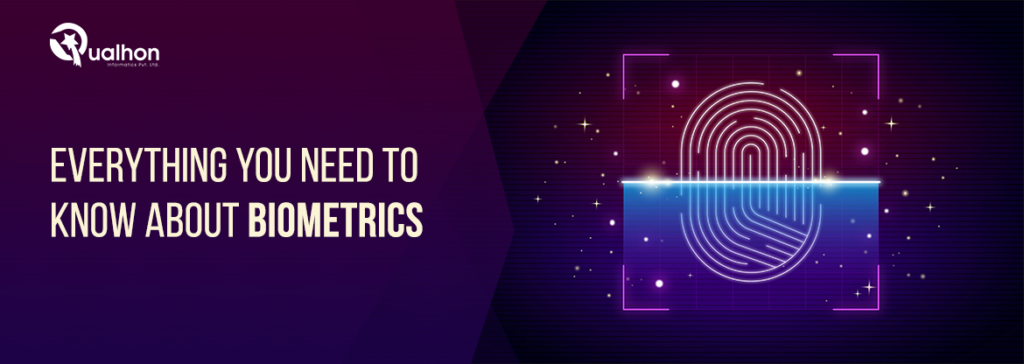Biometrics are in the vogue believing they add an advanced layer to personal and enterprise security systems. And why not, with unique identifiers of your biology and behaviours, this may seem reliable. But, need to keep in mind that using so as the only authentication measure may not be as safe as it’s thought to be.
What is Biometric?
Biometrics are your biological identifiers, or physical characteristics, that are used to identify individuals. This includes- fingerprint mapping, facial recognition, and retina scans, these are common recognition options but the list has many other identifiers too.
Researchers even claimed that the shape of an ear, the way someone walks and sits, unique body odours, the veins in one’s hands, and facial proportions can be other determiners.
Also Read | 5 Reasons why a product video is Necessary for E-Commerce Business
What are the Types of Biometric Security?
Though they certainly have other usages, security is where it’s been more utilised. It can be subdivided into three categories:
- Biological
- Morphological
- Behavioral
Biological Biometrics
It uses traits at a genetic and molecular level. Thus features like DNA fingerprinting, blood type, are among many that might be examined using a sample of human body fluids.
Morphological Biometrics
It uses attributes like the structure of your body, eye, fingerprint, or the shape of your face for identification.
Behavioural Biometrics
This is based on patterns distinctive to each individual. Thus the way you walk, speak, or even how you use the keyboard can be identifiers of your identity, if tracked for security purposes.
How does the Security System work?
With advancements in technology, biometric systems have established themselves as crucial to everyday security. Physical characteristics are unique and locked, even in the case of twins. The exclusive biometric identity can be used to replace or improve password systems for computers, phones, and secured rooms and premises.
After the data is obtained and mapped, it is saved to be matched with future attempts to access. Mostly, the procured data is encrypted and stored within the device or in a secluded location.
Biometric Scanners are hardware used to fetch the biometric for authentication. These scans are then matched against the saved database to either give permission to access or deny the request. Thus here your body is the ‘Key’ to getting access to the system.
Benefits of Biometrics
This type of security option is being adopted by the enterprises and for personal purposes because of these two benefits:
- Usefulness– They can never be lost and stay in the system forever.
- Difficult to imitate– Unlike passwords and keys, biometrics can never be taken away.
Can we rely on these scans?
Biometric scanners are becoming more advanced and complicated with time. They can be found on phone security systems. Like, the facial recognition technology on iPhone X projects 30,000 infrared dots onto a user’s face to confirm the identity by pattern matching. Apple Inc claims failure in iPhone X biometrics is one in a million!
LG V30 on the other hand uses facial and voice recognition with fingerprint scanning and preserves the data on the phone for greater security.
Privacy Concerns
Though the authentication is opportune, but there’s a concern for privacy as it is believed that biometric security wears away personal information. The reason behind lingering fear is individual data could be collected easily and without prior authorization.
Facial recognition is used in almost every area you could think of. China uses so for routine purchases, London on the other side is dotted with CCTV cameras. New York, being new to the list, along with Moscow and Chicago are linking CCTV cameras in their cities to facial recognition databases to help police identify criminals. In 2018, facial recognition was introduced in Dubai airport where travellers are photographed by 80 cameras as they pass through a tunnel in a virtual aquarium.
Picking up with the technology, Carnegie Mellon University is developing a camera that is said to scan the iris of individuals in crowds from ten meters of distance.
The rising concern is the breach of databases by hackers. For example, in 2015 the US Office of Personnel Management was hacked. Cybercriminals ran away with the fingerprints of 5.6 million government employees, leaving their identities vulnerable to a higher risk of piracy.
Preserving data on a device- like the iPhone’s TouchID or Face ID- is considered safer than storing such with a service provider, even when the data is encrypted.
There is a similar risk present with password databases, where hackers may rupture the system and rob data. The complications, however, are substantially different. In case a password is compromised, it can be changed to a new one. While Biometric data will remain the same forever.
A Way Forward
Biometrics will remain a dependable option for cybersecurity systems. With physical and behavioural signatures combined with other authentication measures, a very strong security system comes to the fore. Therefore it is more trustworthy than using a character-based password as the only authentication measure.
Biometrics offers an imperative solution for security. Although there are some risks, it is still more user-friendly and difficult to copy. And with time more advancement will be introduced in these systems.
